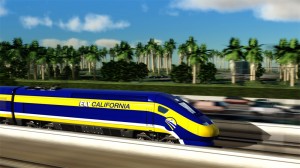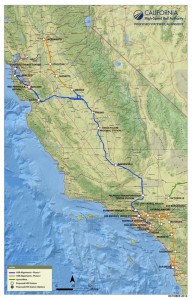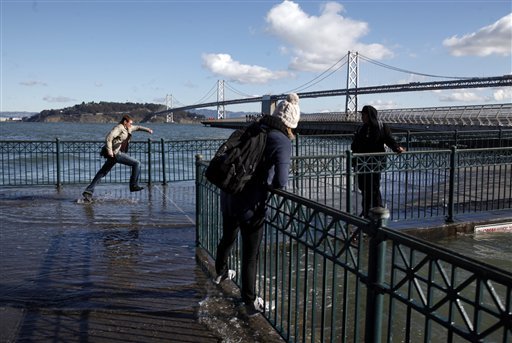Trump’s presidency could have significant consequences for the Bay Area and California at large. Tune in tonight at 7pm on City Visions, KALW 91.7 FM as I host a discussion on how Trump’s actions in his first 100 days could impact our state’s residents, on issues including the environment, immigration, health care, and more.
My guests will include:
- David Campos, attorney and member of the San Francisco Board of Supervisor’s since 2008 representing District 9
- Erwin Chemerinsky, Dean and Professor of Law at the University of California, Irvine School of Law, with a join appointment in Political Science
- Jared Huffman, Democratic Congressman since 2013 representing California’s second district
For those outside of the Bay Area, you can stream the broadcast here. Hope you can tune in!
Last’s week electoral college win, combined with retention of congress, positions the Republican Party to have a hold on all branches of the federal government for the first time since 1928. Yet here in California, the story is totally different. The election served to further weaken the state Republican party, as well as deliver wins on a number of progressive causes.
Tonight on City Visions on KALW Radio, 91.7 FM in San Francisco, I’ll hosting a discussion on the future of the Republican Party in California. Joining me will be:
- Jimmy Camp, former Director of Operations of the Republican Party of California
- Harmeet Dhillon, Republican National Committeewoman
- Markos Moulitsas, Founder and Publisher of Daily Kos
Will explore how the party will try to regain its standing in the state, what the future will hold in a post-Trump world, and how the state’s political prospects could affect the national scene.
For those not in the Bay Area, you can live stream the show via the KALW website. Hope you can tune in!
 California’s high speed rail system has been moving at a low speed since voters approved a bond issue to launch it in 2008. That ballot measure authorized a bullet train from San Francisco to Los Angeles and eventually Anaheim, at speeds of 220 miles per hour and stops in Central Valley cities like Fresno and Bakersfield. The total trip time would be no more than 2 hours and 40 minutes between the two big cities, at fares less than airplane travel.
California’s high speed rail system has been moving at a low speed since voters approved a bond issue to launch it in 2008. That ballot measure authorized a bullet train from San Francisco to Los Angeles and eventually Anaheim, at speeds of 220 miles per hour and stops in Central Valley cities like Fresno and Bakersfield. The total trip time would be no more than 2 hours and 40 minutes between the two big cities, at fares less than airplane travel.
The rationale for the system is that it will provide a cheaper way to move a growing population around the state than expanding airports and highways. It will connect the relatively weak economies of the Central Valley with the prosperous coastal cities, providing an economic boost, all while enabling low-carbon transportation and promoting car-free lifestyles for communities connected to the system.
But since 2008, legal and political battles have slowed the system’s progress, as everyone from farmers in the Central Valley, wealthy homeowners in the San Francisco peninsula, and even equestrians in the hills above Burbank have fought to push the route away from their land. It’s local NIMBY politics on a statewide scale.
These legal and political challenges have in turn created funding headaches for the system. The original price tag of $40 billion ballooned to a projected $118 billion, before a revised business plan reduced it to an estimated $62 billion, as described in the 2016 business plan. Of that amount, the 2008 bond issues provides almost $10 billion, federal funds provide another $3.3 billion, and cap-and-trade funds may provide another few billion. System backers hope the rest come from private sources, but so far none have stepped up.
With strong support from the governor, the state was able to dedicate 25% of cap-and-trade auction proceeds to high speed rail construction. But the auction faces legal uncertainty going forward, due to a pending court case brought by the California Chamber of Commerce. An adverse verdict could mean that the money will halt either immediately or post 2020.
Meanwhile, the federal government has been unusually stingy with this infrastructure project. After Republicans took over Congress in the 2010 midterms, the federal dollars dried up, leaving the state to fund the project on its own. Only the 2009 stimulus provided some federal money for the train, but nowhere close to a match for the state contribution. By comparison, the federal government typically contributes 50% of the money for urban rail systems and between 90 and 100% for highways.
The funding picture has now affected the route design. The initial connections were going to be from the Central Valley to somewhere north of Los Angeles, hooking into the commuter Metrolink train to deliver passengers to Union Station in downtown Los Angeles. Now there’s not enough money to get the train through the Tehachapi mountains that separate Southern California from the Central Valley. So the initial connection will now go to San Jose from the Central Valley, with a link to the commuter Caltrain to get passengers to San Francisco. High speed rail bond money will then pay for upgrades to Caltrain and Metrolink, to prepare those systems for eventual high speed rail connections.
So with all the controversy and politics for this important project, I look forward to interviewing California High Speed Rail Authority chair Dan Richard tonight on City Visions, on NPR affiliate 91.7 FM KALW radio in San Francisco, from 7-8pm. For those out of the area, you can stream it or listen to the archived broadcast after the show here. I’ll ask Dan for more information on the funding, politics, and current construction status. And listeners are free to call in or email with questions. Hope you can tune in and ask your questions about the system’s future!
Last night on City Visions on KALW radio we had a feisty discussion about direct democracy in California, with special attention on San Francisco’s crowded ballot. City voters there are faced with 25 initiatives this year, many put on due to a quirk in the city charter that allows supervisors to place them as leverage over political opponents.
Joining me for the discussion were:
- Bruce Cain, Professor of Political Science at Stanford University;
- Joe Eskenazi, Senior Editor at San Francisco Magazine; and
- Quentin L. Kopp, Member of the San Francisco Ethics Commission, retired California Superior Court judge, former San Francisco Supervisor, and prior California State Senator.
Bottom line: the advent of direct democracy has proven popular with the voters in concept and is tough to reform, even if voters don’t like having so many choices to make. However, we discussed possible reform efforts related to paid citizen signature gathering and shorter ballot.
You can listen to the discussion here. And next Monday, I’ll be hosting a one-on-one discussion with California High Speed Rail Authority chair Dan Richard, so mark your calendars now!
With California’s big primary election tomorrow, I’ll be hosting a live roundtable discussion on KALW Radio’s “City Visions” tonight at 7pm on 91.7 FM in the San Francisco Bay Area, KALW.org for live streaming.
Guests include:
- Mark DiCamillo, Director of The Field Poll
- Jason McDaniel, Assistant Professor of Political Science at San Francisco State University
- James Lance Taylor, Professor and Director of the African American studies program at the University of San Francisco
We’ll cover presidential politics, the senate race, local elections, and more!
UPDATE: Audio now available here.
Climate change presents a lot of uncertainty for our future. But one of the climate impacts that scientists predict with confidence is sea level rise, as the ice to our north and south melts with a warmer global climate.
The ocean has already risen eight inches in the past century, and the median scientific estimate is that it will rise another four feet or so by 2100. But a subset of scientists thinks that estimate is too low. Some think that the sea level rise will be closer to 12 feet.
Regardless, even a few feet of ocean rise will cause havoc on our coastal cities and infrastructure. The costs will be enormous, as we glimpsed with the storm surge caused by Superstorm Sandy in the New York City area.
To discuss how the San Francisco Bay Area will adapt to this likely future, I’ll be hosting a City Visions radio show on KALW 91.7 FM tonight at 7pm. Please tune in and join the conversation. I’ll post a link to the archived broadcast tomorrow.
UPDATE: The broadcast is now archived here.




